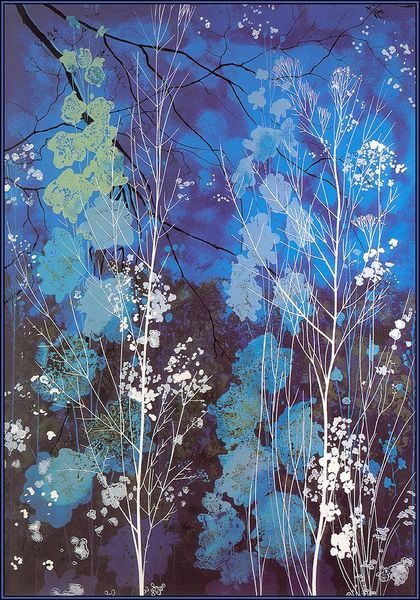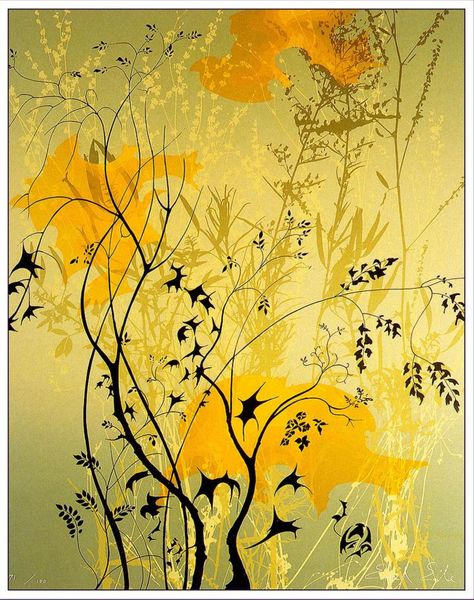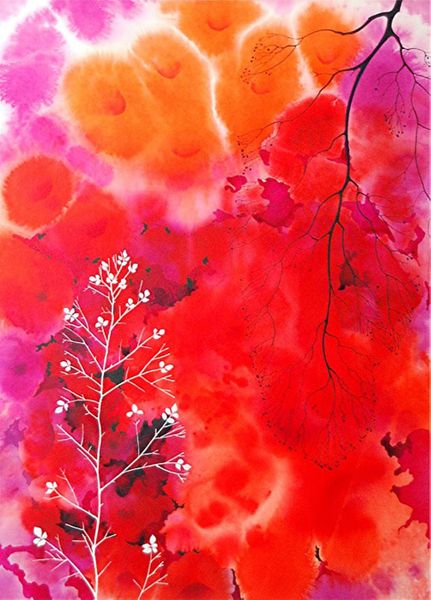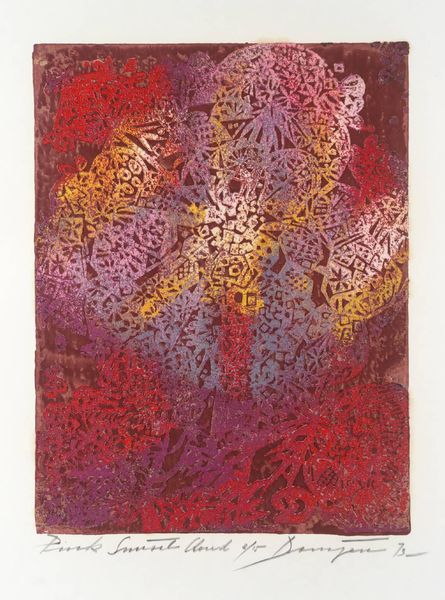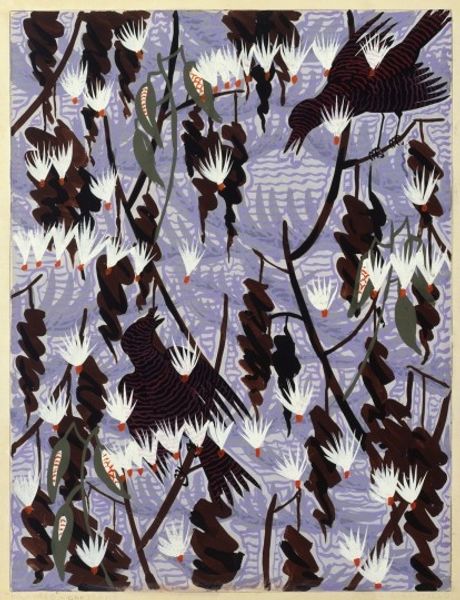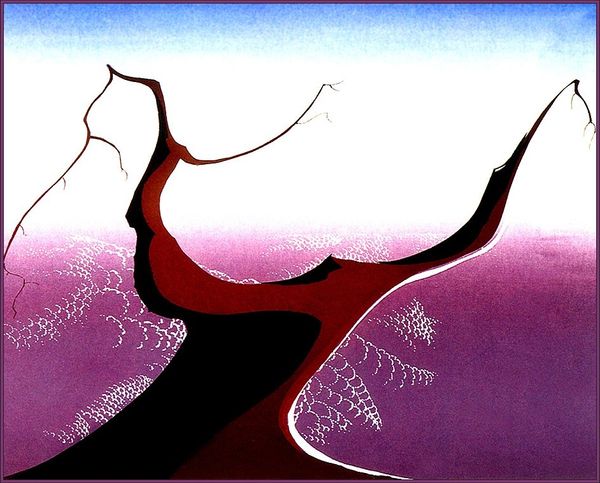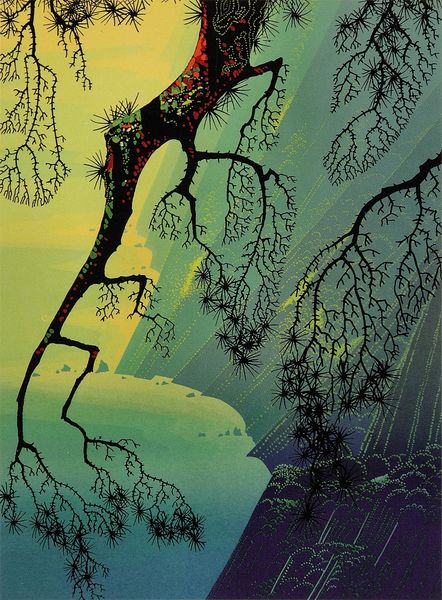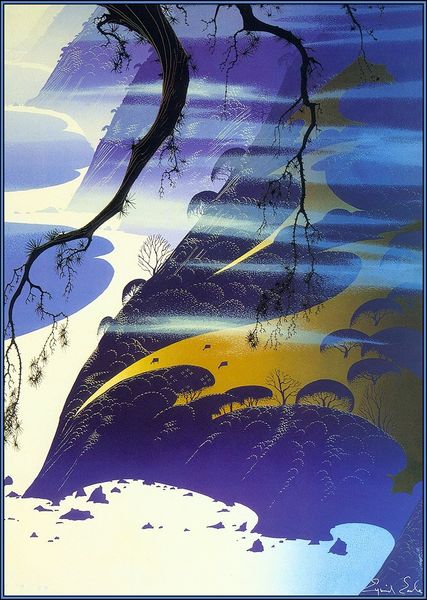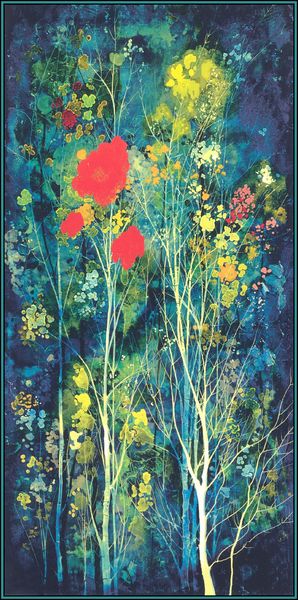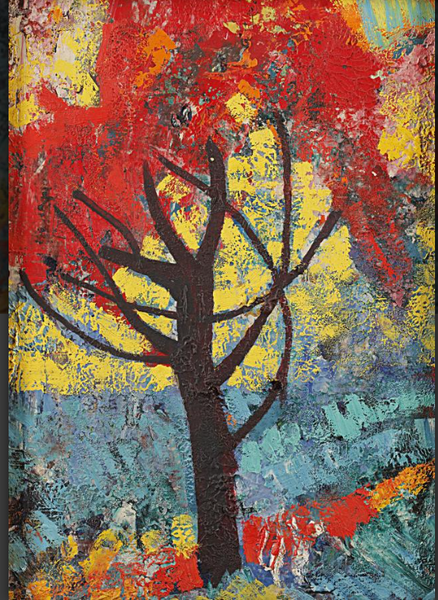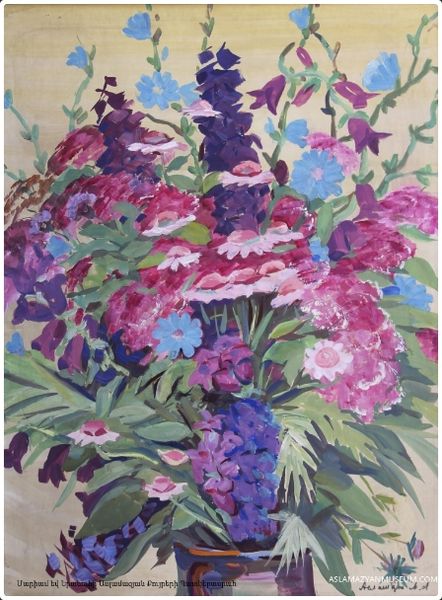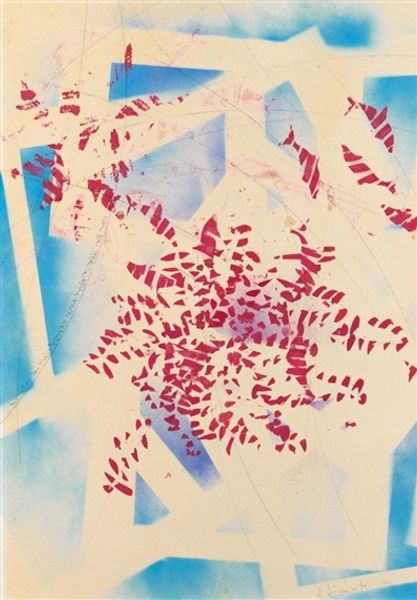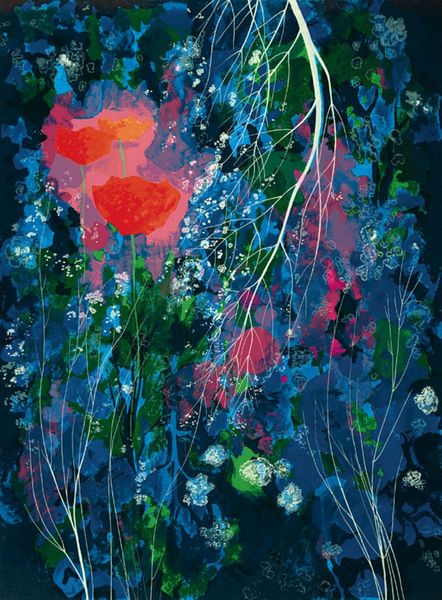
painting, acrylic-paint
#
tree
#
organic
#
painting
#
landscape
#
acrylic-paint
#
form
#
abstract pattern
#
forest
#
organic pattern
#
geometric
#
plant
#
abstract nature shot
#
flower pattern
#
abstraction
#
line
#
modernism
Copyright: Eyvind Earle,Fair Use
Editor: So, this is Eyvind Earle's "Autumn Leaves," painted in 1982 using acrylics. It strikes me as both meticulously organized and wonderfully dreamlike. What do you see in this piece? Curator: Beyond the aesthetic appeal, I see a dialogue between nature and control. Earle's stylized landscapes, like this one, emerged during a period of heightened environmental consciousness, particularly after Rachel Carson's "Silent Spring." The precise, almost geometric forms of the leaves, rendered in bold colors, can be interpreted as a commentary on humanity's attempt to impose order onto the natural world. Editor: So the stylization and abstraction serve a purpose beyond aesthetics? Curator: Absolutely. Consider the choice of the subject matter. The shift from lush greenery to the stark beauty of autumn could symbolize both decay and resilience. Moreover, Earle's simplification and flattening of form reminds me of a critique on representation itself, echoing modern anxieties about our distanced relationship with the organic world in an age of increasing technological mediation. Does that resonate with your experience of the artwork? Editor: That’s a perspective I hadn't considered, but it definitely adds a new layer of complexity to the viewing experience! I was initially drawn to its graphic beauty, but now I can appreciate its engagement with ecological and social issues too. Curator: Indeed. Art becomes a space to reflect upon not only what we see, but how we see and what socio-political baggage our gaze carries. Editor: I’ll definitely be thinking about that going forward! Thanks so much for sharing your insights!
Comments
No comments
Be the first to comment and join the conversation on the ultimate creative platform.
